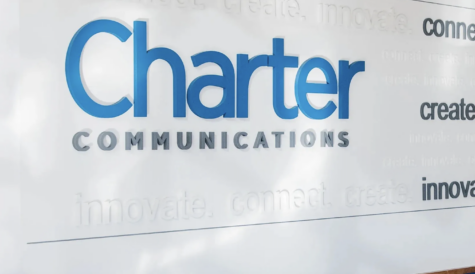AVOD is coming. How do you sell it to viewers?
 At the start of the year there was widespread discussion about the projected rise of AVOD, but what no-one could have foreseen then was that SVOD would lead a huge increase in OTT viewing in Q2. The world has turned on its head in so many ways recently that such predictions have gone out of the window.
At the start of the year there was widespread discussion about the projected rise of AVOD, but what no-one could have foreseen then was that SVOD would lead a huge increase in OTT viewing in Q2. The world has turned on its head in so many ways recently that such predictions have gone out of the window.
But still it does seem that when cocooning ends that there will be a trend towards ad-funded models. MIDiA said recently that there would be “a growing role for ad-supported propositions” over the long-term. This is not just due to the impact of Covid-19, though. The commitment to big-budget originals from the major streaming players means that older, but still popular, library content is left behind for other platforms to pick up. They won’t be able to command subscription fees, though, so they’ll have to monetise through advertising. according to Ampere Analysis. Meanwhile, Deloitte predict that viewers will conduct “spring cleans” of their subscriptions, increasing churn and a dependency from streaming platforms on advertising.
With this is mind, it would be sensible for streaming providers to prepare for all eventualities.
Realising the potential of AVOD is challenging, not least in solving how to present advertising to a generation of viewers that have become used to ad-free streaming. The winners in the battle for the advertising pie will be the ones that get the balance right. This comes at a time when viewer patience for ads is falling. According to FreeWheel there were only 3.4 ads per OTT mid-roll ad break in the U.S. in Q3 2019, down from 3.8 in the same period the year before. These figures were higher in Europe, where there were 4.3 ads in Q3 2019 compared with 4.7 in Q3 2018, but there is a common downward trend that cannot be ignored. If a streaming provider were to adopt AVOD today then it would need to mitigate for fewer ad spots in years to come.
This news makes sustainable advertising revenues harder to generate and streaming platforms must increase the value of each ad spot through ad targeting and advanced ad sales methods like programmatic and prebidding to compensate. Achieving this at scale while providing a TV-like experience is hard to do. Achieving consistency across multiple devices is harder still.
Here are some golden rules to getting the viewer experience right when it comes to advertising:
- TV must be seamless: no buffering
- Ads must be frame-accurate: don’t miss the cues and show a snippet of the next scene
- There must be a consistency of experience across all platforms
- Think TV, then improve it: seamless, no buffering and with features like scrubbing, AI-powered recommendations
In order to meet these requirements, streaming providers will need dynamic video assets that can be managed via an easy-to-manage playlist. Such an approach is dependent on server-side stitching, which provides, a) an efficient, flexible and scalable workflow, and b) consistency across devices. For most content owners, this means re-aggregating libraries and creating new MP4 assets that contain all the necessary metadata, including SCTE-35 and IFrames for ad insertion. Such “modernised” MP4s negate the need for different workflows to support different streaming formats and devices because both HLS and MPEG-DASH video streams can be created from them. This creates significant efficiencies in the workflow by reducing encoding, storage and transportation costs of heavy video files.
With the video stream properly prepared, streaming platforms can focus their attention on simply editing playlists via an easy-to-operate CMS or control panel rather than having to encode different versions of video assets for different scenarios. The accurate positioning of the SCTE-35 markers ensures frame-accuracy when stitching the ads, while performing stitching on the server side means that a consistent, seamless stream can be delivered across the widest possible range of devices with no additional development required on the device’s app.
Through playlists the provider also has the freedom to decide, on the fly, how many ads to stitch into each ad break. Streams can be completely personalised meaning there’s an opportunity to increase the value of each ad spot through targeting and programmatic trading. Meanwhile, if the viewer chooses to switch to an ad-free subscriber model, then a playlist-based approach means that they can still receive the same stream from the same workflow – all the provider needs to do is set a rule to ignore the SCTE-35 markers.
By re-aggregating video libraries and switching the focus from video files to the playlist, all scenarios are catered for from a single video source. This level of agility is not possible by working with video in any other way and it ensures that streaming platforms are able to commit to a viewer-first approach while ensuring that advertising revenues are protected over the long term, whatever the circumstances.
The world has turned on its head in the last couple of months and no-one can truly predict what will happen next, but playlist-based workflows ensure providers are prepared for all eventualities.
Simon Westbroek is VP Global Sales at Unified Streaming.



